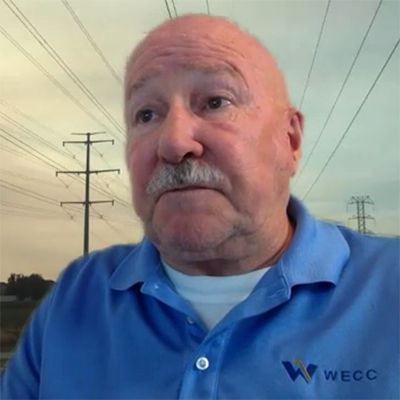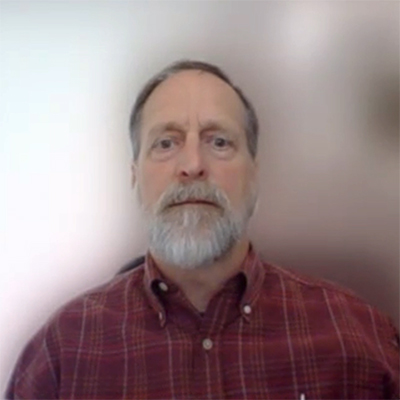
Staff from WECC and the Texas Reliability Entity said Thursday that repeated disturbances involving distributed energy resources (DER) in recent years show that integrating distributed energy resources into the bulk power system will take close coordination between NERC, the regional entities and industry.
The staff members were speaking at a Texas RE webinar to discuss last year’s Odessa disturbance. During the event, which occurred May 9, a fault in a combined cycle power plant near Odessa, Texas, caused nearly 20 solar photovoltaic (PV) and wind facilities, some as far as 200 miles away, to suffer reduced voltage.
NERC and Texas RE last September released a report on the event that concluded the power industry is not moving fast enough to implement NERC’s reliability guidelines, while also urging FERC and the ERO to add binding requirements related to reporting and correction of performance abnormalities. (See NERC-ERCOT Report Reviews Texas Solar Issues.)
 Steve Ashbaker, WECC | Texas RE
Steve Ashbaker, WECC | Texas REThursday’s webinar compared the Odessa disturbance to recent incidents in the Western Interconnection, also involving performance drops by solar and wind facilities, to emphasize that the issue is not limited to one region.
Steve Ashbaker, WECC’s reliability initiatives director, said that just in the last year, the West has dealt with four events involving disruption to power output from DERs: the Victorville disturbance on June 24; Tumbleweed on July 4; Windhub on July 28; and the Lytle Creek Fire on Aug. 25. This is the same number of events seen in the previous five years, indicating a significant increase.
James Hanson of WECC’s event analysis department pointed out that the rise in disturbances parallels the penetration of DERs, particularly solar panels, in the Western Interconnection. Generation interconnect requests for solar power have risen from a bit more than 10,000 in winter of 2016 to nearly 100,000 in summer 2021. This trend represents a growing “reliance” on solar power in the interconnection, Hanson said, which means system planners need to be aware of the unique characteristics of DERs, which have contributed to these incidents.
Older Plants Lack Flexibility
The most important factor is not the recently installed plants but the older ones, which have been involved in multiple events. The reason, he said, is that these veteran plants do not incorporate the technology controls that allow greater flexibility in newer facilities.
“We have some legacy plants here that have inverters that are eight to 10 years old, and … their settings can’t be altered, so you can’t disable the momentary cessation settings … as the newer, modern technology can be disabled,” Hanson said.
Ashbaker also pointed out that the “data resolution” provided by many inverters is low due to infrequent sampling; many plants have equipment that records data only every five minutes, even though faults can be cleared in as little as 50 milliseconds. This denies investigators the information they need to determine the cause of incidents and recommend actions to fix the underlying issues.
 Mark Henry, Texas RE | Texas RE
Mark Henry, Texas RE | Texas REAnother common issue pointed out by Mark Henry, Texas RE’s director of reliability services, is the lack of accurate models for DERs and other “weak areas in the grid” that leave grid operators with little idea what to expect in the event of a problem.
“We want to be able to understand the characteristics of this equipment,” Henry said. “We’d like the equipment all to perform fully within expected specs, but we also understand that inverter-based resources are different than the synchronous generation that we’re more used to. And it turns out that we’ve got to have very sophisticated models that use electromagnetic transient analysis. … When I started my career, that was a very rare thing to see that sort of analysis. Now it’s becoming more routine.”
The presenters reiterated the earlier report’s calls for utilities to follow the recommendations of NERC and their regional entities but went further by urging listeners to volunteer for the groups in those organizations working to set those guidelines. They emphasized that equipment manufacturers, regulators and registered entities need to hear from each other in order to manage the system properly.
“We have abundant opportunities for dialogue between all the parties involved with this, and we expect to see more of that. We expect that NERC will have a very active role with their staff and engaging the different people who are involved,” Henry said. “There’s a lot of work that has to be done, and everyone can expect that we will be reaching out to engage on these things … to a higher degree.”


